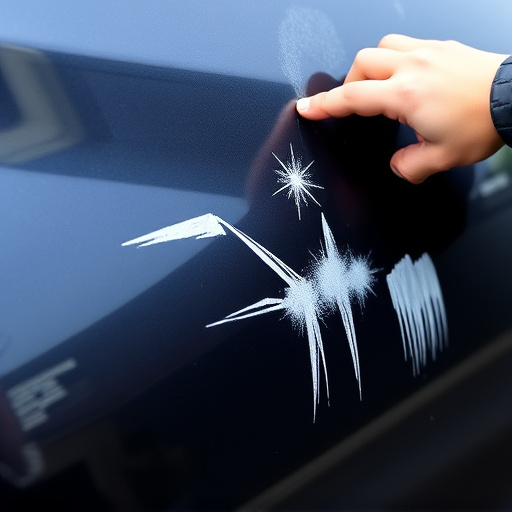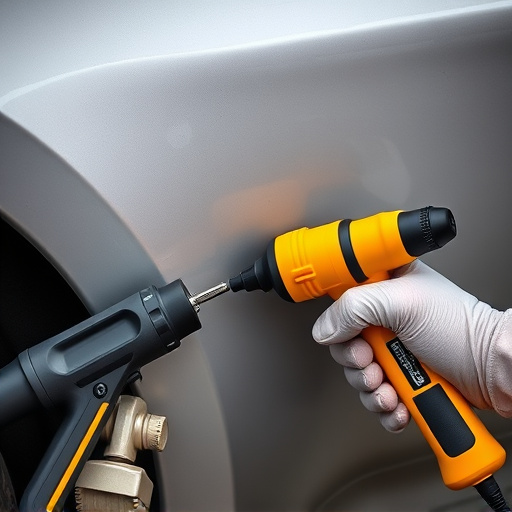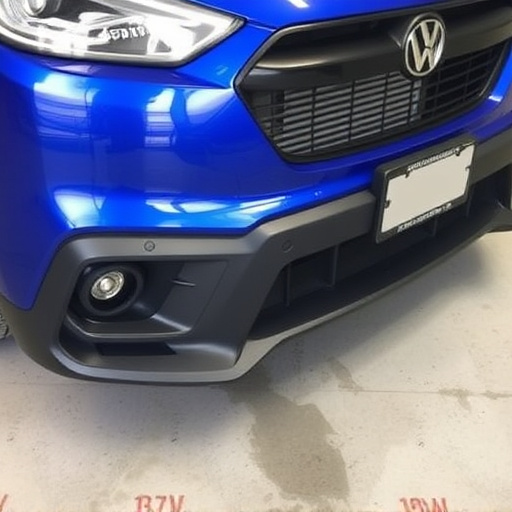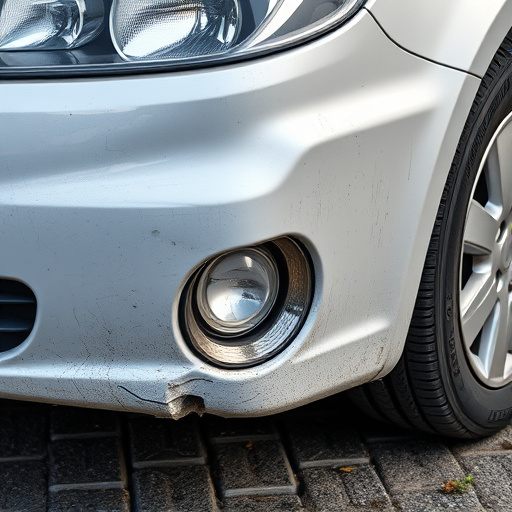An ultrasonic thickness gauge is a non-destructive tool measuring material thickness via ultrasonic waves, widely used in auto maintenance for panel replacement and structural integrity checks. Accurate setup and calibration are essential for precise measurements, with regular daily routines and maintenance crucial for optimal performance. Specific applications like collision repair or thin materials require compensating settings adjustments to ensure reliable readings.
An ultrasonic thickness gauge is a versatile tool for measuring material thickness with precision. This article guides you through the best practices for operating this advanced device, ensuring accurate and reliable results. From understanding the principles behind the ultrasonic thickness gauge to setting up, calibrating, and maintaining your device daily, these steps will help extend its lifespan and optimize performance.
- Understanding the Ultrasonic Thickness Gauge Tool
- Setting Up and Calibrating Your Device
- Best Practices for Daily Use and Maintenance
Understanding the Ultrasonic Thickness Gauge Tool

An ultrasonic thickness gauge tool is a highly precise device used to measure the thickness of various materials non-destructively. It operates by transmitting ultrasonic waves into the material and measuring the time it takes for these waves to bounce back, thereby calculating the material’s thickness. This technology finds extensive application in industries such as auto maintenance and vehicle restoration, where accurate measurements are crucial for tasks like panel replacement or structural integrity checks.
For auto body repair professionals, understanding how an ultrasonic thickness gauge works is paramount. It helps ensure that new panels being installed match the original specifications precisely, maintaining the vehicle’s overall integrity. Moreover, it aids in identifying hidden damage or delaminations that might not be apparent to the naked eye, making it a valuable tool for thorough inspections. This technology’s non-invasive nature also makes it ideal for quality control during restoration projects, preserving the structural integrity of vintage vehicles while restoring them to their former glory.
Setting Up and Calibrating Your Device

Setting up and calibrating your ultrasonic thickness gauge is a crucial step to ensure accurate measurements. Begin by carefully unboxing and inspecting the device for any signs of damage or defects. Ensure all components, including transducers and accessories, are included and in good working condition. Follow the manufacturer’s instructions to set up the gauge, which typically involves attaching the transducers securely to the surface you intend to measure.
Calibration is a critical process that requires precision. Use high-quality calibration standards or samples provided by the manufacturer. Adjust the settings on your ultrasonic thickness gauge until it matches the known thickness of these standards. This step ensures accurate readings, especially when used in an automotive body shop or for auto painting applications, where minute variations in thickness can significantly impact outcomes.
Best Practices for Daily Use and Maintenance

To ensure optimal performance and longevity of your ultrasonic thickness gauge, consistent daily use and thorough maintenance practices are essential. Begin each day by calibrating the device to account for any environmental fluctuations that may impact readings. Regular cleaning with a soft cloth dampened in isopropyl alcohol removes dirt, grease, or debris that could interfere with sound transmission.
When not in use, store the ultrasonic thickness gauge in a protective case or container, away from direct sunlight and extreme temperatures. Avoid dropping or damaging the transducer, as this component is crucial for accurate measurements. For auto collision repair services or car paint jobs involving thin materials, double-check settings to compensate for any changes in material properties, ensuring precise and reliable thickness gauge readings every step of the way.
An ultrasonic thickness gauge is a versatile tool that offers accurate measurements for various materials. By understanding its functionality, properly calibrating the device, and adhering to best practices for daily use and maintenance, you can ensure consistent and reliable results from your ultrasonic thickness gauge. These practices are essential for maintaining the integrity of measurements and extending the lifespan of the instrument.













